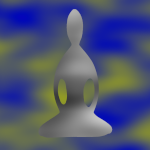Dear Friends,
Continuing with Sally Armstrong’s talk, “Facets of Equanimity,” looking at some of the ways equanimity might be experienced in our meditation practice.
She states, “Any moment of true or clear mindfulness has equanimity in it.”
You can hear this balance of equanimity in the definitions of mindfulness Sally shares.
Mindfulness is the aware, balanced acceptance of the present experience. It isn’t more complicated than that. It is opening to or receiving the present moment, pleasant or unpleasant, just as it is, without either clinging to it or rejecting it.
~ Sylvia Boorstein, It’s easier than you think: the Buddhist way to happiness
Mindfulness brings the qualities of poise, equilibrium and balance to the mind, keeping it sharply focused, with the attitude of sitting back and watching the passing show.
~ Joseph Goldstein, The Experience of Insight: A Simple and Direct Guide to Buddhist Meditation
As Kamala reviewed in the previous talk, mindfulness is a key balancing factor in the Five Faculties. Sally summarizes it as, “The mind that has these faculties in balance.”
Another list where mindfulness is the balancing factor is the Seven Factors of Awakening. The list starts with mindfulness. Then there are three “arousing” factors: investigation, energy, joy. And there are three “calming” factors: calm, concentration, equanimity.
Jeanne Corrigal has used a lovely analogy that describes this balance of the awakening factors. She compares the factors to a great soaring bird – like an eagle or raven. One wing of the bird represents the arousing factors, the other wing represents the calming factors. The bird’s body is mindfulness, and at the heart of the bird is kindness. If you’ve ever watched a bird soaring, it sometimes only needs to move a little feather to adjust its trajectory. The bird rides one the ever changing winds, and has this great overview of the world (another sense of equanimity).

Guided meditation: Jill Shepherd leads a mostly silent meditation, practicing choiceless awareness, with occasional instructions to check for the presence or absence of each of the seven factors of awakening: mindfulness, investigation, energy, joy, tranquility, concentration, and equanimity (about 29 minutes)
https://www.dharmaseed.org/teacher/637/talk/51565/
Feel free to share your reflections or comments below, or by email.
With warm wishes,
Andrea

AG
My major paradox in the practice: I approach equanimity, touch it, even embody it & it falls away once again & for a time I even completely forget that there is even the possibility of equanimity. It seems to be in the nature of the way this world is created. Remembering followed by forgetting followed by remembering with the spiral gradually closing in on truly remembering. Vipassana… to see things they way they truly are. I accept this reality but it definitely seems so mysteriously confusing…. why the necessity of sinking once again into delusion & doubt when in real time I have known the certainty with unerring awareness that the source of the Creation is both awake and imbued with abiding Love? As you pointed out in your Jan 11 posting …. ” it is like this….” I surrender to the way it must be… do I have a choice?
RND
Hi Robbie, I appreciate your comments, as always.
I think of this remembering followed by forgetting and remembering again as a dance. Phillip Moffitt describes it this way:
“Even under the best of circumstances, life is challenging, and much of the time it is difficult. It is always uncertain, constantly changing, and mostly out of your control. Whether it is taking you on a wonderful ride or stepping on your toes, life will move you with the rhythm and in the direction of its own unfolding, irregardless of your best intentions. Life dances and you must dance with it. This is the necessary price and mysterious gift of being incarnate—alive in a body.”
http://dharmawisdom.org/books-phillip-moffitt/dancing-life